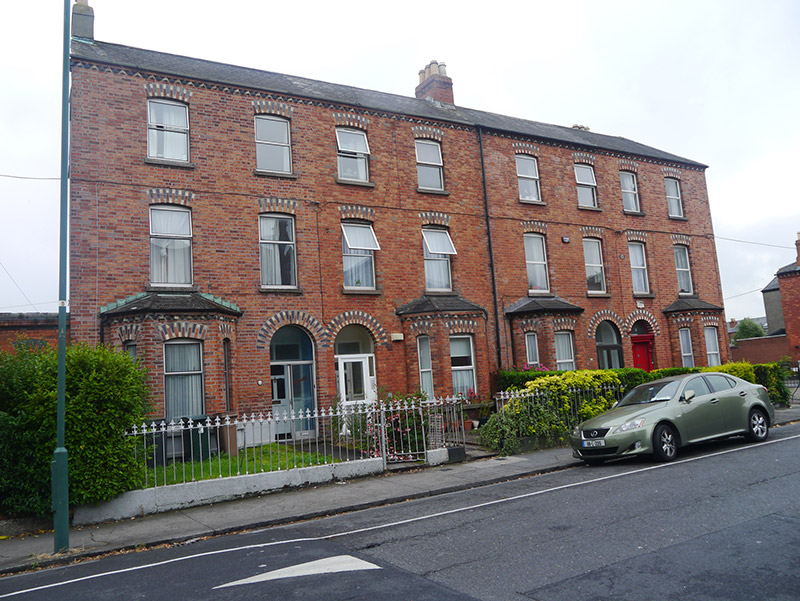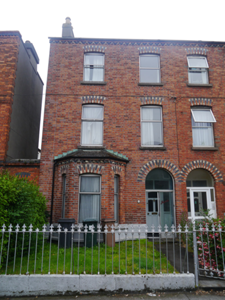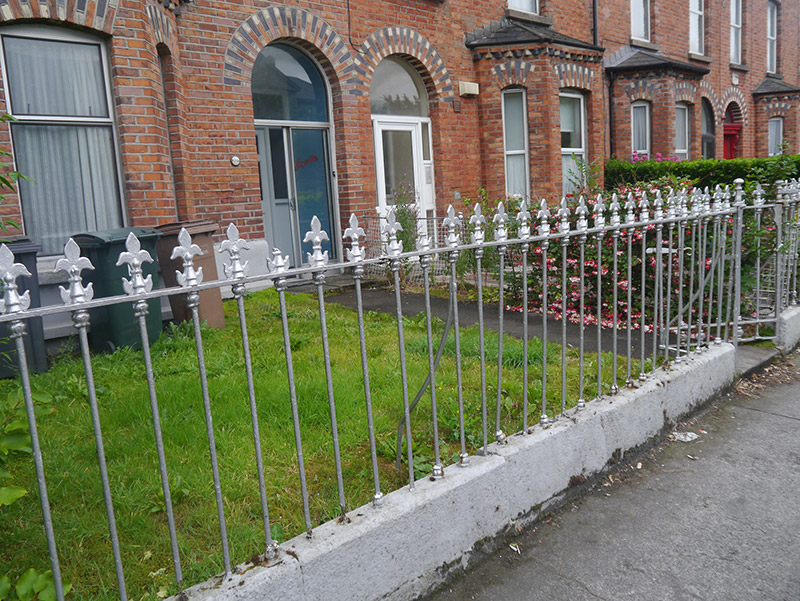Survey Data
Reg No
50130197
Rating
Regional
Categories of Special Interest
Architectural, Artistic
Original Use
House
In Use As
Apartment/flat (converted)
Date
1890 - 1900
Coordinates
315932, 236316
Date Recorded
02/07/2018
Date Updated
--/--/--
Description
End-of-terrace two-bay three-storey former house, built c. 1895 as one of terrace of four, having canted-bay to ground floor of front (north) elevation, and single-storey return to rear elevation with enclosed yard. Now in use as apartments. M-profile pitched slate roof with angled ridge tiles, replacement uPVC gutter supported on cogged yellow and black brick eaves course, and red brick chimneystack with yellow clay pots to east gable. Red brick walling, laid in Flemish bond, over granite plinth course, with painted smooth render to sill level. Camber-arch window openings with polychrome (red, black and yellow) brick voussoirs, generally replacement stone sills, granite sill to canted-bay, and replacement uPVC frames. Entrance recessed within round-headed integral porch with plain reveals, polychrome brick voussoirs; porch opening now glazed with aluminium sliding door; square-headed six-panel timber entrance door (top three panels glazed) with sidelights and two-light transom, approached by nosed granite step with cast-iron boot-scrape. Set back behind garden bounded to front by cast-iron railings with decorative finials on cut granite plinth to front.
Appraisal
This well-built house is part of a terrace of four late nineteenth-century houses on the south side of St. Alphonsus Road Lower. Taller than other terraces on the road, the group is a dominant feature of the streetscape. Its attractive frontage is ornamented with lively yellow and black voussoirs and high-quality gauged brick detailing, such as the cogged eaves course. St. Alphonsus Road was laid out in the late nineteenth century as part of the suburban expansion of the Drumcondra area. The road developed from the east, eventually connecting to Iona Road which was set out in the early twentieth century. It is highly representative of the type of housing that characterizes the area, driven by speculative builders who often constructed small groups of terrace houses, resulting in subtle variety of proportions, materials and detailing.





